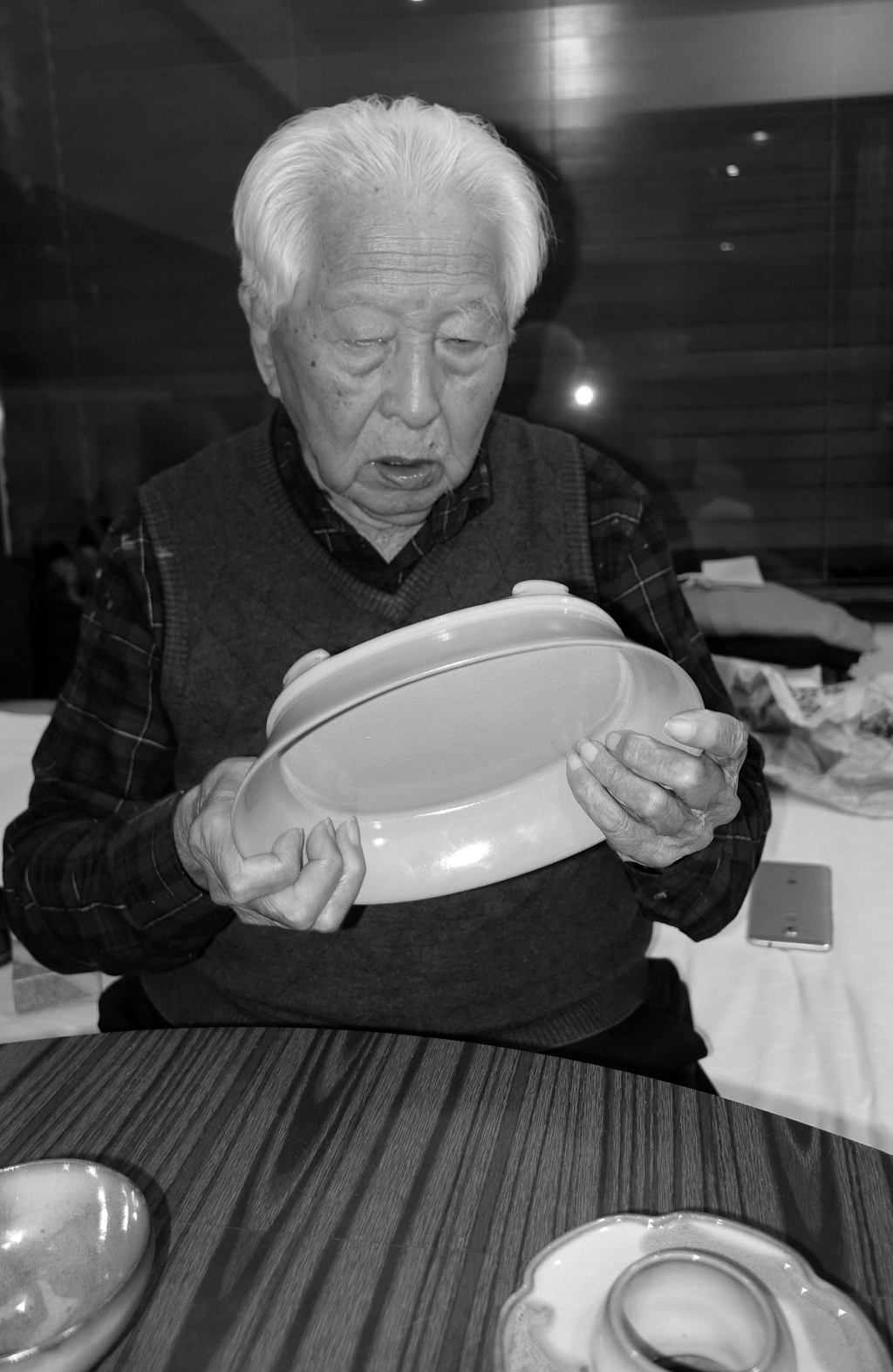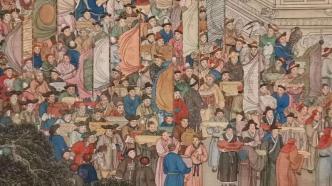
From April 1st to June 30th, the exhibition "The Forbidden City and Versailles - Sino-French Exchanges in the 17th and 18th Centuries" was presented in the Wenhua Hall of the Palace Museum. The exhibition is jointly organized by the Palace Museum and the French Palace of Versailles, Museums and National Garden Public Institutions (hereinafter referred to as the Palace of Versailles). The exhibition takes the theme of diplomatic, cultural and artistic exchanges between China and France and displays 200 exquisite cultural relics. The Paper saw at the scene that the ancient Wenhua Hall of the Forbidden City presented a strong atmosphere of Sino-French cultural exchanges. The red columns, tiles, and colorful ceiling paintings of the Wenhua Hall were reflected in the dots of lights that illuminated the exhibits. .
The exhibition takes the audience back to the Chinese and French courts from the second half of the 17th century to the 18th century. This period was one of the periods when the French royal family and its court were most interested in Chinese culture. A large number of Chinese handicrafts and books entered the collections of the French court and nobles, triggering a creative trend of "Chinese style art" centered on the Palace of Versailles and spreading to Europe. The French court preserved a large number of items from China and Chinese-style art works created in France, which became important evidence for understanding Sino-French relations and artistic exchanges during this period.
The Chinese court also gave its own response to the turbulent international world. After Louis XIV sent the "King's Mathematician" to China, a large number of French Jesuits came east. Many French people served here for a long time. They had great influence on the Qing Dynasty. The court had an important influence in many fields such as science, art, architecture, medicine, cartography, etc. This situation lasted until the end of Qianlong.
The exhibition is presented in the ancient Wenhua Hall of the Forbidden City. The red columns, tiles, and colorful ceiling paintings of the Wenhua Hall are reflected in the dots of lights that illuminate the exhibits. The overall atmosphere is peaceful and quiet. The opening and exhibition of the ancient paintings involve the need for cultural relic protection. The lighting is dark, so you need to stop and take a closer look. The colorful porcelains from the French court, with gold carvings and paintings, are illuminated with brilliance. Eye-catching.
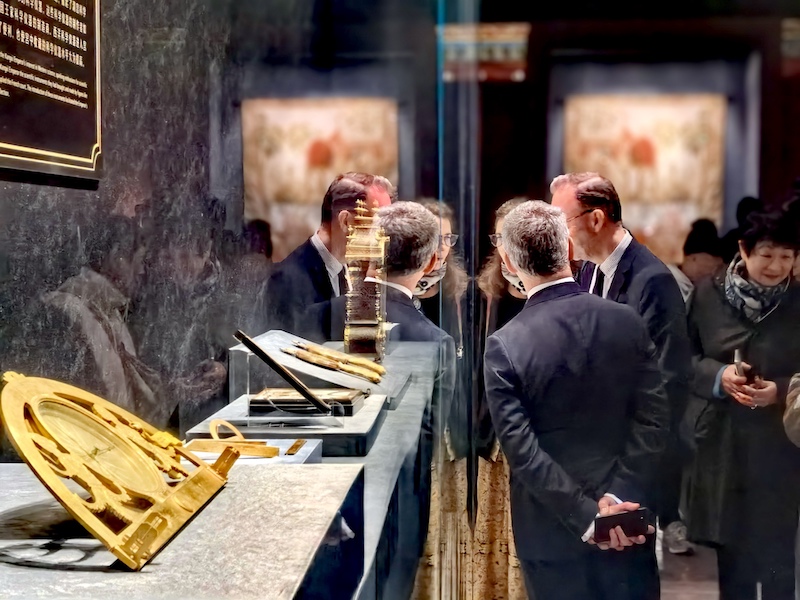
The exhibition site also restored the "Chinese Room" of Queen Marie Leszczyńska of Louis XV.
The "Chinese Room" was the private room of Louis XV's queen, Marie Leszczyńska, at the Palace of Versailles. The room was rearranged twice with a Chinese theme at the Queen's behest. Once in 1747, the pattern on the wall panels of the room was Chinese-style "Indian" wallpaper, and it became a "China Room". Another time was in 1761, when the queen ordered eight huge oil paintings depicting Chinese tea cultivation and trading activities from the painters of the King's Collection Hall to decorate the entire room, and the "China Room" became the "Chinese Room". The Queen herself also participated in the creation of these paintings. The room is also equipped with rare porcelain and very beautiful marble-patterned lacquer furniture, which became a representative of the Chinese-style rooms in the Palace of Versailles at that time.
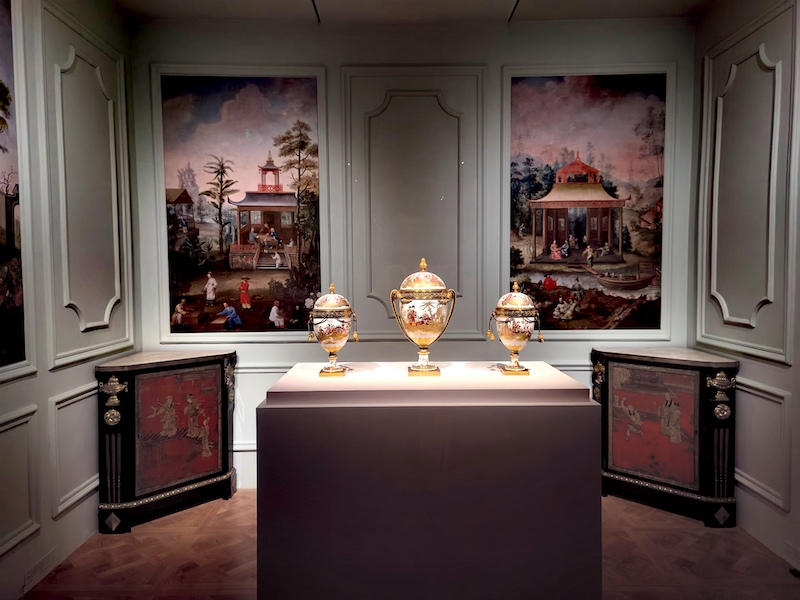
The exhibition opens with "The Encounter of the Dragon and the Lily."
The dragon is the unique cultural creation and spiritual symbol of the Chinese people, and the lily is the symbol of the French royal family. The encounter between the dragon and the lily originated in 1688.
In this year, the "King's Mathematician" sent by French King Louis XIV arrived in Beijing and was received by Emperor Kangxi, which officially opened the political exchanges and cultural exchanges between China and France. The exchanges between China and France showed the characteristics of the two countries' courts always paying high attention to active promotion, focusing on scientific and artistic exchanges, and using the Jesuits who served the Qing court as a bridge of communication. The spread of ancient Chinese cultural classics and historical works to the west contributed to the birth of modern French Sinology.
The Western influence is first reflected in the presentation of the image of the emperor. A scroll of Emperor Qianlong in ancient costume painted by the Qing Dynasty. The face of the figure in the painting was painted by the Western painter Lang Shining, while the clothes and background of the figure were painted by the court painter Jin Tingbiao. This is a manifestation of the "combination of Chinese and Western".
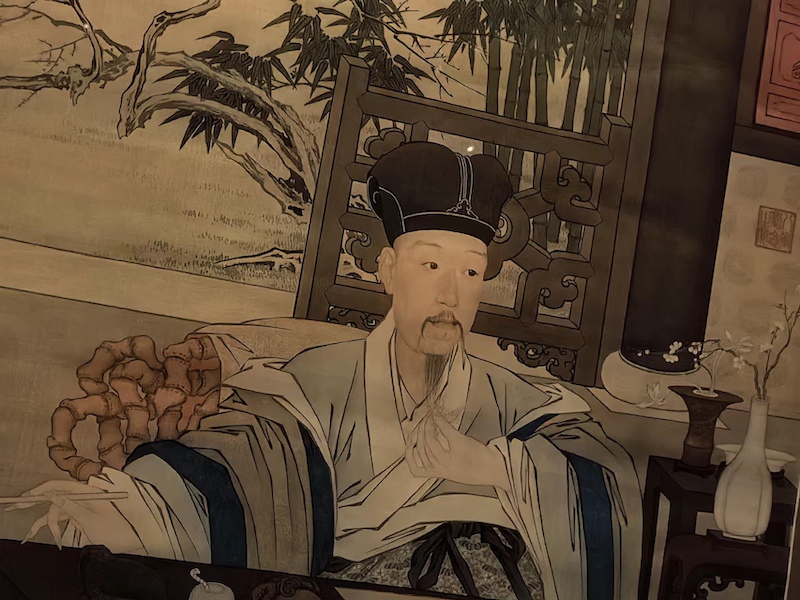
Qing Dynasty Painting of Emperor Qianlong's Ancient Costume Scroll
A portrait screen of Emperor Yongzheng's dress more clearly reflects the Western influence. The clothes of Emperor Yongzheng in the painting were influenced by King Louis XIV of France, and the way of painting was influenced by the "masquerade portraits" popular in Europe at that time. It also showed the unconventional nature of Emperor Yongzheng and the Qing Dynasty court's strong interest in European fashion. interest.

Yongzheng Emperor's dress portrait screen
Another Qing Dynasty painting of Emperor Kangxi in his uniform shows a scene of the emperor studying calligraphy in his youth.

Qing Dynasty painting of Emperor Kangxi's portrait scroll
Part of the Western paintings of the same period, the portrait of King Louis XIV of France from about 1672 is exquisite and rich. The upper part of the picture is a portrait of Louis XIV. Below the portrait are scientific instruments and books such as musical instruments representing art and a globe representing science, demonstrating his identity as a protector of art and science. Louis XIV used science as a way to establish contact with Emperor Kangxi. The five missionaries he sent to the Beijing court were mathematicians. The missionary mission sent by Louis XIV to China achieved fruitful exchange results.

Portrait of King Louis XIV of France in 1672
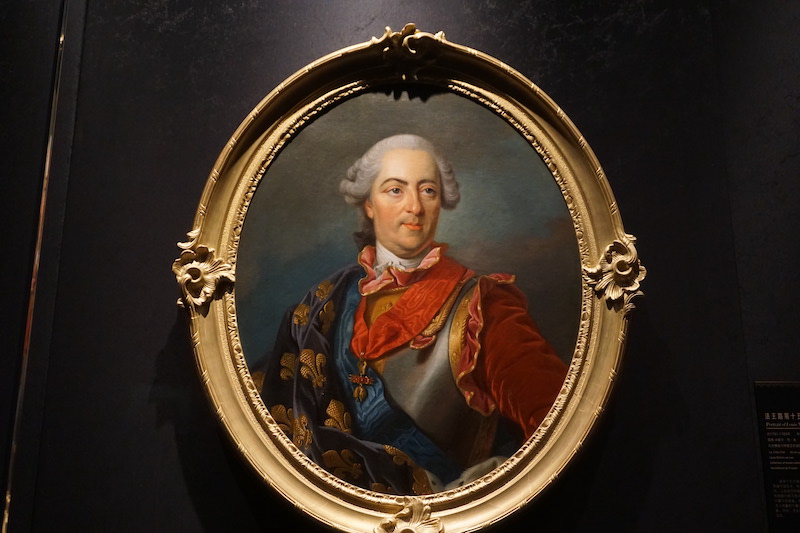
Portrait of King Louis XV
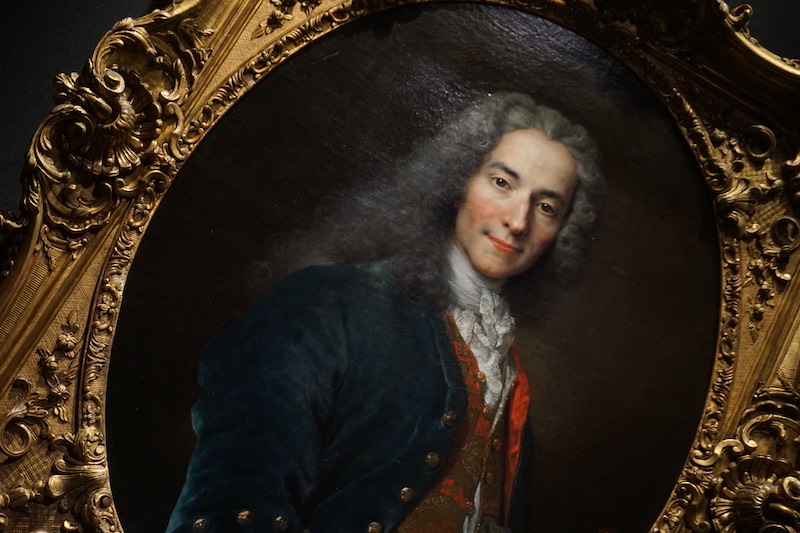
Portrait of Voltaire
There is also a large-scale picture of the coming of all nations to Korea. What is interesting is that in the picture, many Western envoys are holding flags with different country names, and one of them says "France".

Picture of All Nations Coming to Korea
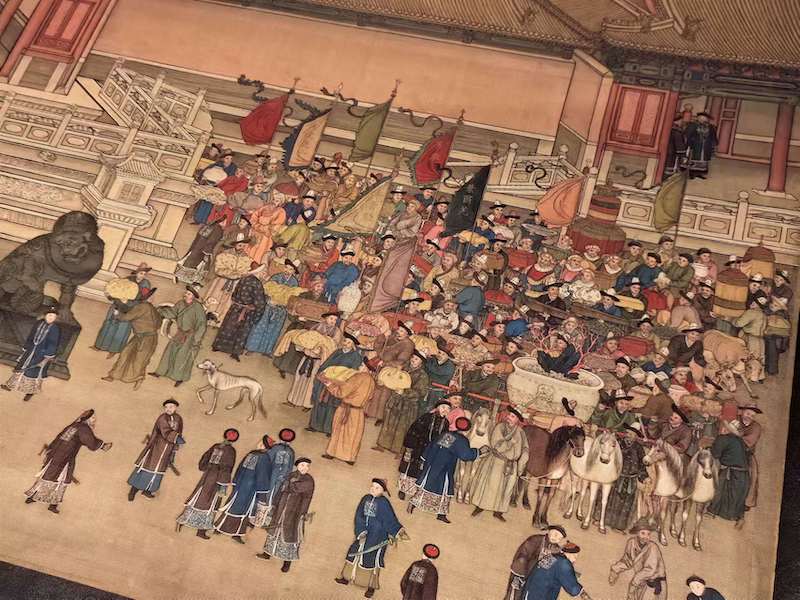
Picture of All Nations Coming to Korea
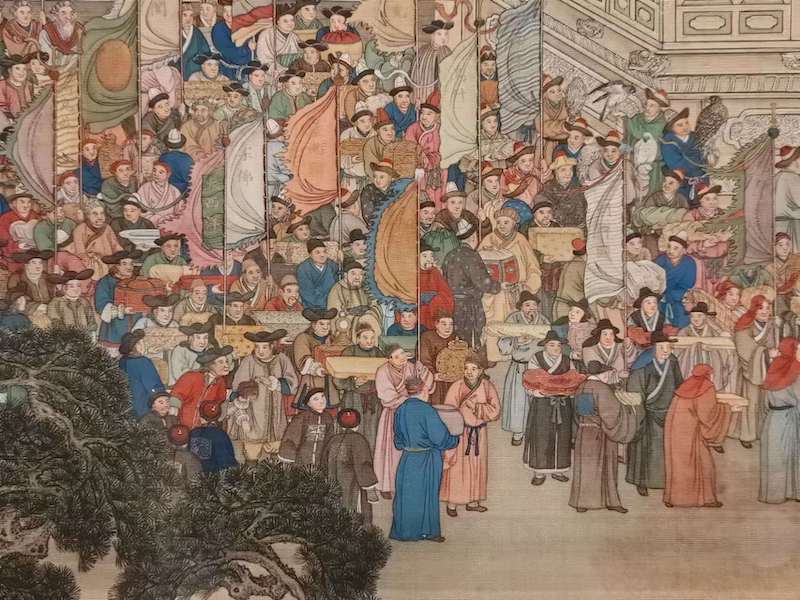
Picture of All Nations Coming to Korea
A gold-plated copper shell portrait pocket watch from the National Palace Museum. The golden lily pattern in the center of the dial is the French royal emblem. The consecrated center of the case is a portrait of French King Louis XIV. The balance wheel protective cover in the movement is engraved with a Chinese five-clawed dragon. . Guo Fuxiang, a research librarian at the Palace Museum and the Chinese curator of the exhibition, speculated that this watch was most likely a gift from Louis XIV to Emperor Kangxi and was an important physical evidence of the exchanges between the two emperors.
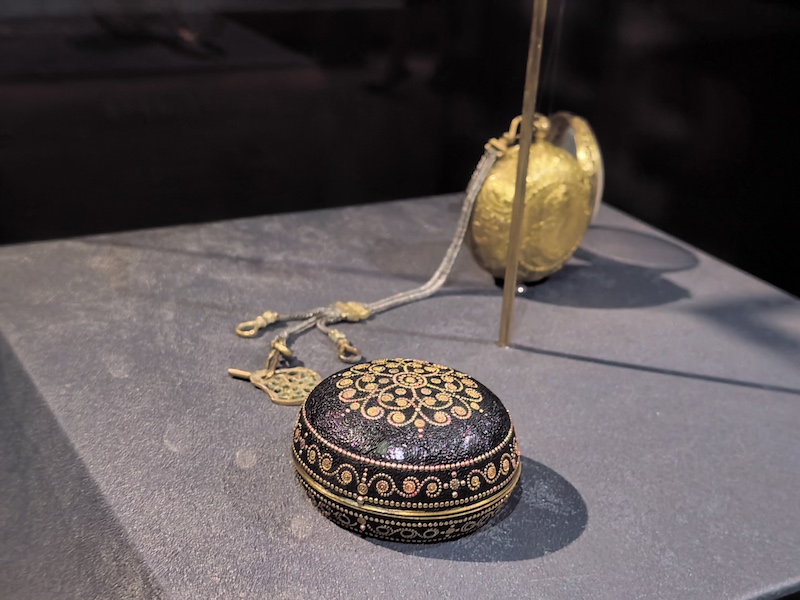
Consecrated figure pocket watch with gold-plated copper shell
The silver-gilt kettle from the Palace of Versailles is the only surviving piece of the gold and silverware presented to Louis XIV by the Siamese envoys. It is in Chinese style, carved in silver, and decorated with gilded high-relief figures, birds, animals, flowers and pagodas. Louis XIV and the revolutionary government of 1793 ordered gold and silverware to be melted down, and this pot survived twice. "Although it is a gift from the Siamese mission, it comes from China. It is the earliest physical silverware exported from the Lingnan region that we have seen so far," said Guo Fuxiang, the curator of this exhibition.
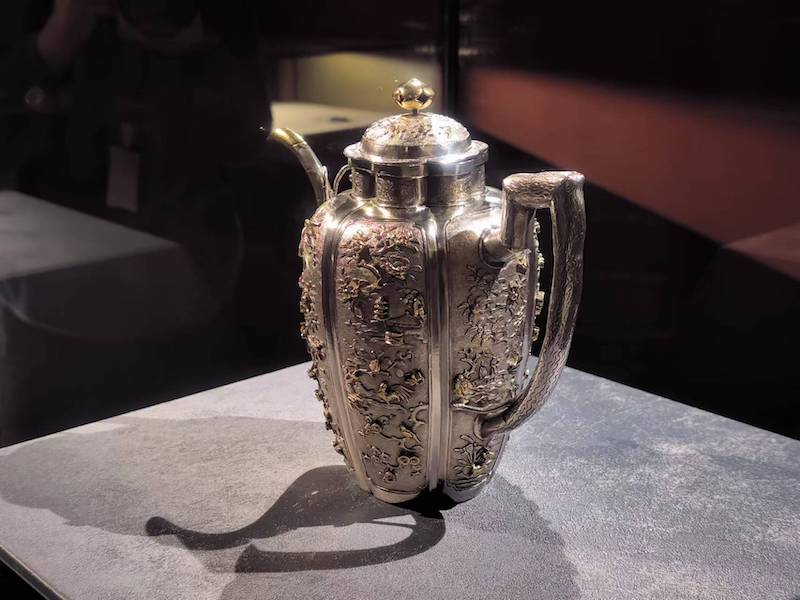
silver gilt pot
The second unit of the exhibition is called "French Scenery in the Forbidden City" and is divided into two chapters: "Gifts and Customization" and "Intersection and Innovation". The palace collections of the Qing Dynasty contain a rich variety of items from France, either as gifts from exchanges between the two countries, as contributions from missionaries, or as a result of trade between the two countries.
At the same time, as Sino-French exchanges continued to deepen, there were many cases where the Qing palace ordered items from France. There are many artifacts in the Qing Palace that were influenced by French craftsmanship or bear the imprint of French culture. The profound and exquisite cultures of China and France interacted closely in the Forbidden City, inspiring rich imagination and new creativity.

Gold-plated copper round box watch collected by the Palace Museum

Gold-plated copper telescope with enamel inlay, Collection of the Palace Museum
In the exhibition there is a group of begonia-style flower baskets with enamel peony patterns. In 1775, Qianlong ordered 10 pieces of Kangxi and Yongzheng porcelain to be sent to Guangzhou, asking the Guangdong Customs to imitate them and mark them as "Qianlong-made". At the same time, he also sent the drawings of the utensils to France for "ordering." The three flower baskets, from left to right, are made in France, the original Kangxi model and the imitation made during the Qianlong period.
Two similar pieces of Qing Palace "overseas shopping" porcelain are also on display. Style identification is the easiest way for laymen to identify the origin of porcelain. For example, the blue flower pot painted on an enamel white ground is marked "Made in the Qianlong Year", but the writing is skewed and the word "made" is missing. It should be caused by French craftsmen imitating Chinese characters. The lid of the Qianlong-style enamel chrysanthemum pattern pot has stamp marks on the inner edge of the goldsmith's mark, the Paris region's tax stamp, and the metal purity stamp, indicating that it was made in the Paris region of France in 1783.
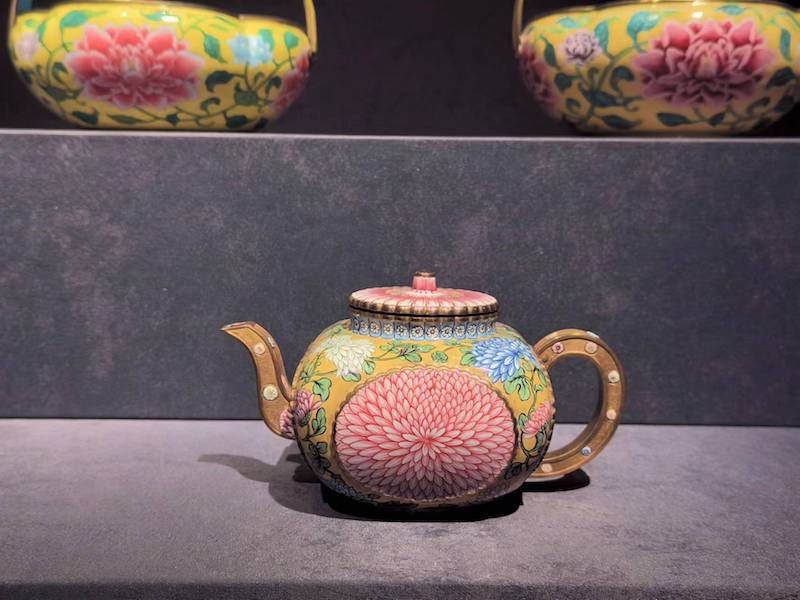
Qianlong style enamel pot with chrysanthemum pattern
There is also a Manchu version of "Elements of Geometry" in the exhibition. Curator Guo Fuxiang said that French missionaries Bai Jin and Zhang Cheng compiled this set of Manchu textbooks based on the "Elements of Geometry" by the ancient Greek mathematician Euclid in order to facilitate teaching Western mathematics to Kangxi. This is precious information for studying the history of cultural exchanges between China and the West.
The large official comprehensive agricultural book compiled by Emperor Qianlong is not conspicuous among the many exquisite cultural relics. But Qian Deming, a Frenchman at the time, realized that the book was very useful for the development of French agriculture and sent it back to France. In the 19th century, French sinologists obtained useful information through the study of the "Tongkao on the Imperial Order of Time". There are also Chinese-style porcelain produced by the Sèvres Porcelain Factory, which is brightly colored. These are representatives of France learning Chinese porcelain technology in practice. Guo Fuxiang said: "I hope that through the exhibits, the audience will understand this history of political exchanges in which China and France respect and appreciate each other, as well as the history of cultural exchanges in which China and France learn from each other."

Manchu version of "Elements of Geometry"
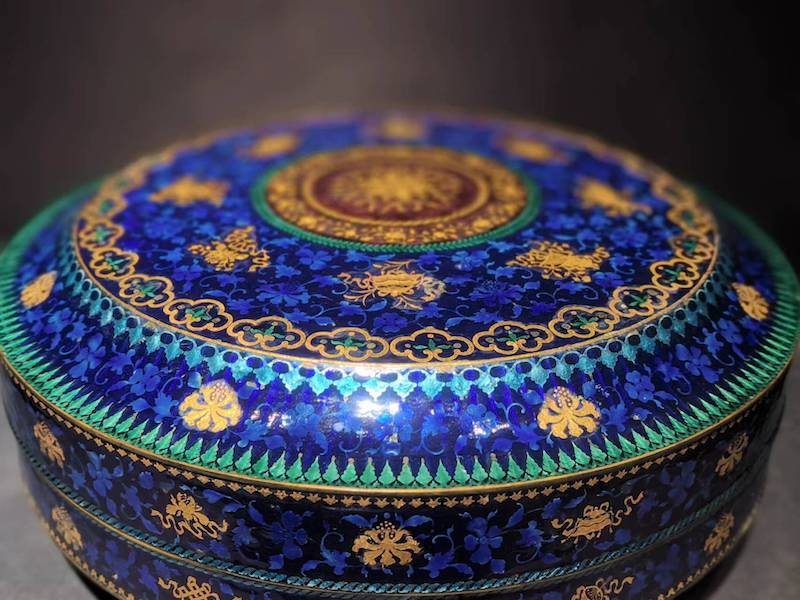
Clear and transparent enamel blue ground gold flower box collected by the Palace Museum

Qing Huang Ground Enamel Verses Plum Blossom Pattern Bowl European imported copper body painting enamel materials influenced Chinese porcelain
There is also a portrait in the exhibition that was copied from an old oil painting collected by the Qing Dynasty. This oil painting is now in the collection of the National Palace Museum in Taipei. The source of its image is related to artistic exchanges between China and the West, especially the artistic exchanges between the Chinese and French courts. It is an important material for exploring the influence of French court uniforms on Qing court paintings.
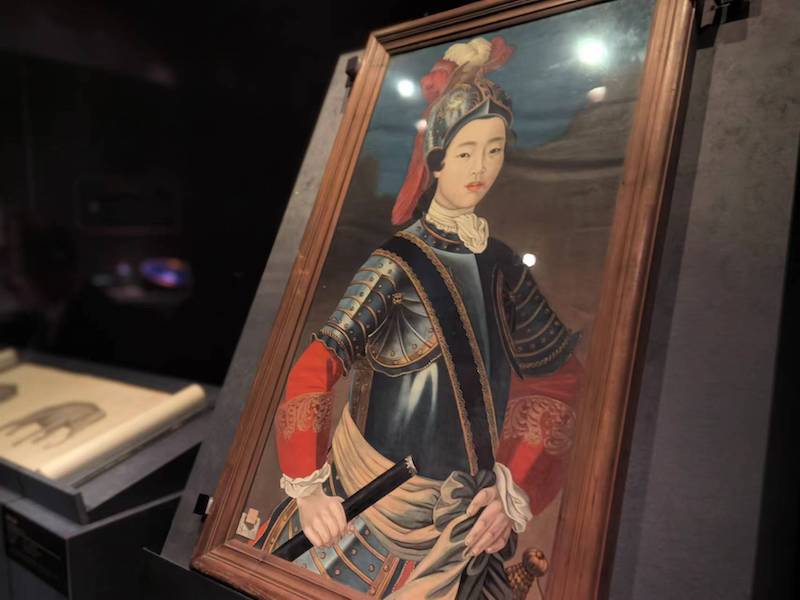
Hanging screen of portraits of ladies in military uniforms during the Republic of China
The third part of the exhibition is "Chinese Fashion at Versailles", which is divided into two chapters: "Collection and Transformation" and "Imitation and Inspiration".
Chinese culture has a profound influence on French art fashion, and imitation of Chinese porcelain is an important part of French "Chinese style art". China has become a source of creative inspiration for French artists and intellectual elites, who have drawn heavily on Chinese elements in many fields.
With the deepening of exchanges between China and the West, a large number of Chinese items were transported to the European market, and many members of the French royal family and dignitaries became collectors of Chinese art. At the same time, France decorated and transformed items imported from China to suit its own aesthetic needs.
A celadon perfume bottle from the Palace of Versailles is decorated with luxurious rococo-style copper-gilt ornaments on the top, rim, and base of the porcelain bottle. According to records, this porcelain vase was purchased in 1743 and placed in Louis XV's wardrobe at the Palace of Versailles. It is the only existing Chinese porcelain that has been identified as belonging to Louis XV.
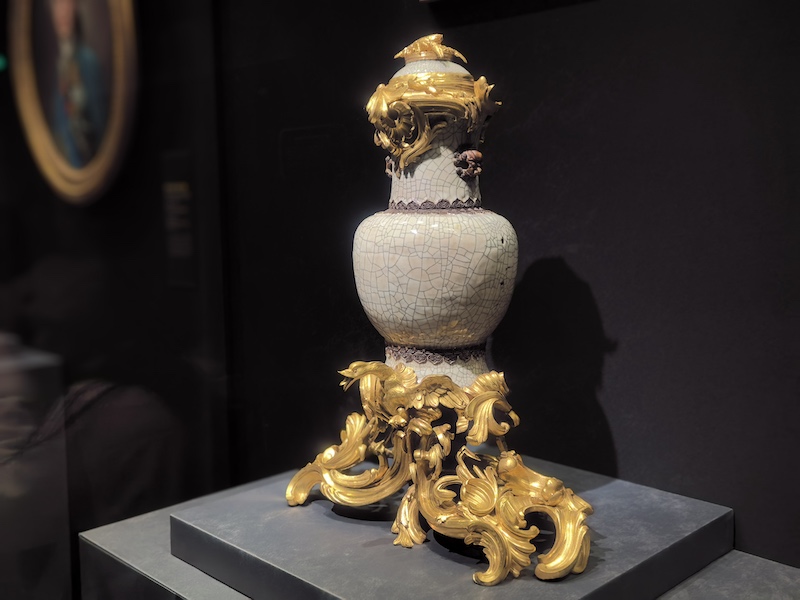
celadon perfume bottle
Porcelain was one of the most powerful media through which Chinese art entered the French court. The French royal family began to have a small collection of porcelain in the 16th century. By the time of Louis XIV at the end of the 17th century and the beginning of the 18th century, the number of Chinese porcelain collected by the royal family increased significantly. The early collection of Chinese porcelain in the Palace of Versailles and its affiliated palaces was mainly blue and white porcelain. The blue and white porcelain selected for this exhibition is similar to similar products exported to Europe during the same period. Similar products are mostly found in the early Chinese porcelain collections of members of the French royal family.
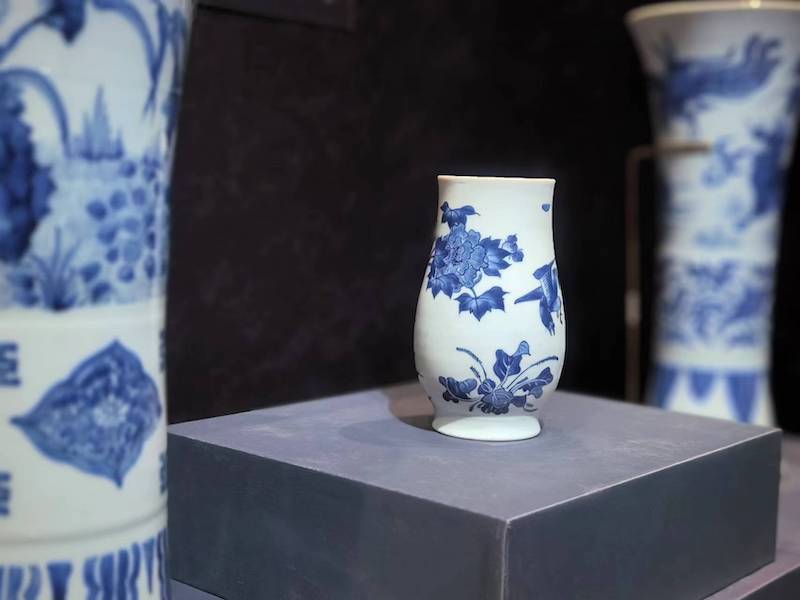
Early Qing Dynasty blue and white porcelain

Ceramic fragments unearthed in the gardens of the Palace of Versailles
Imitation of Chinese porcelain is an important part of French "Chinoiserie" art. French porcelain is full of charming imagination about China.
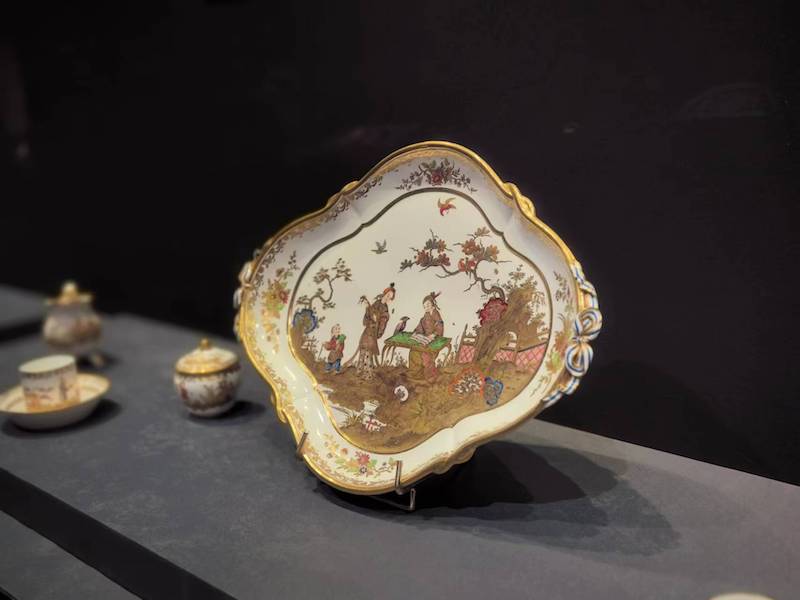
Painted gold landscape figures tea set
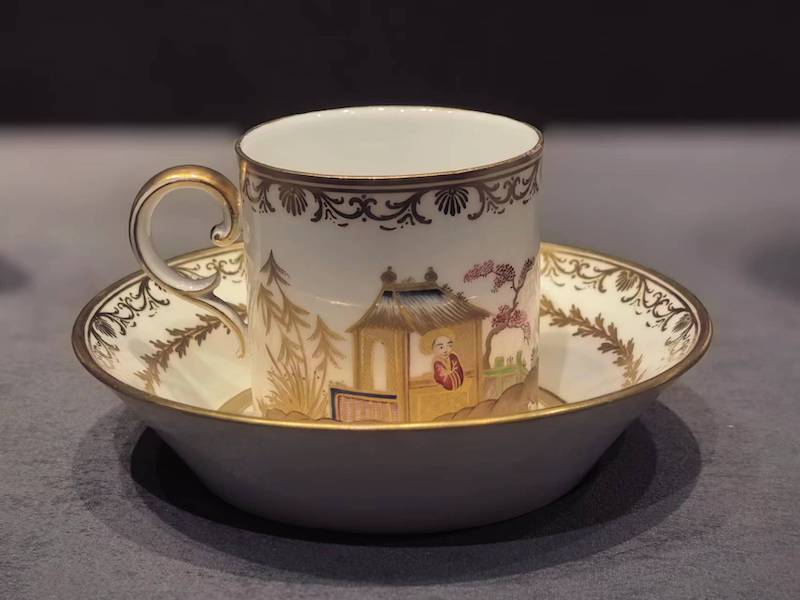
Painted gold landscape figures tea set
The exhibition traces the historical traces of exchanges and interactions between China and France from the second half of the 17th century to the 18th century. Although China and France are separated by thousands of mountains and rivers, they have made continuous attempts to understand each other and practiced cultural exchanges throughout history. Their attraction to each other and their interest in each other have always been deep in historical memory and are endlessly evocative. They have become a good story of exchanges and mutual learning in the history of the development of world civilization.
The exhibition lasts until June 30.
